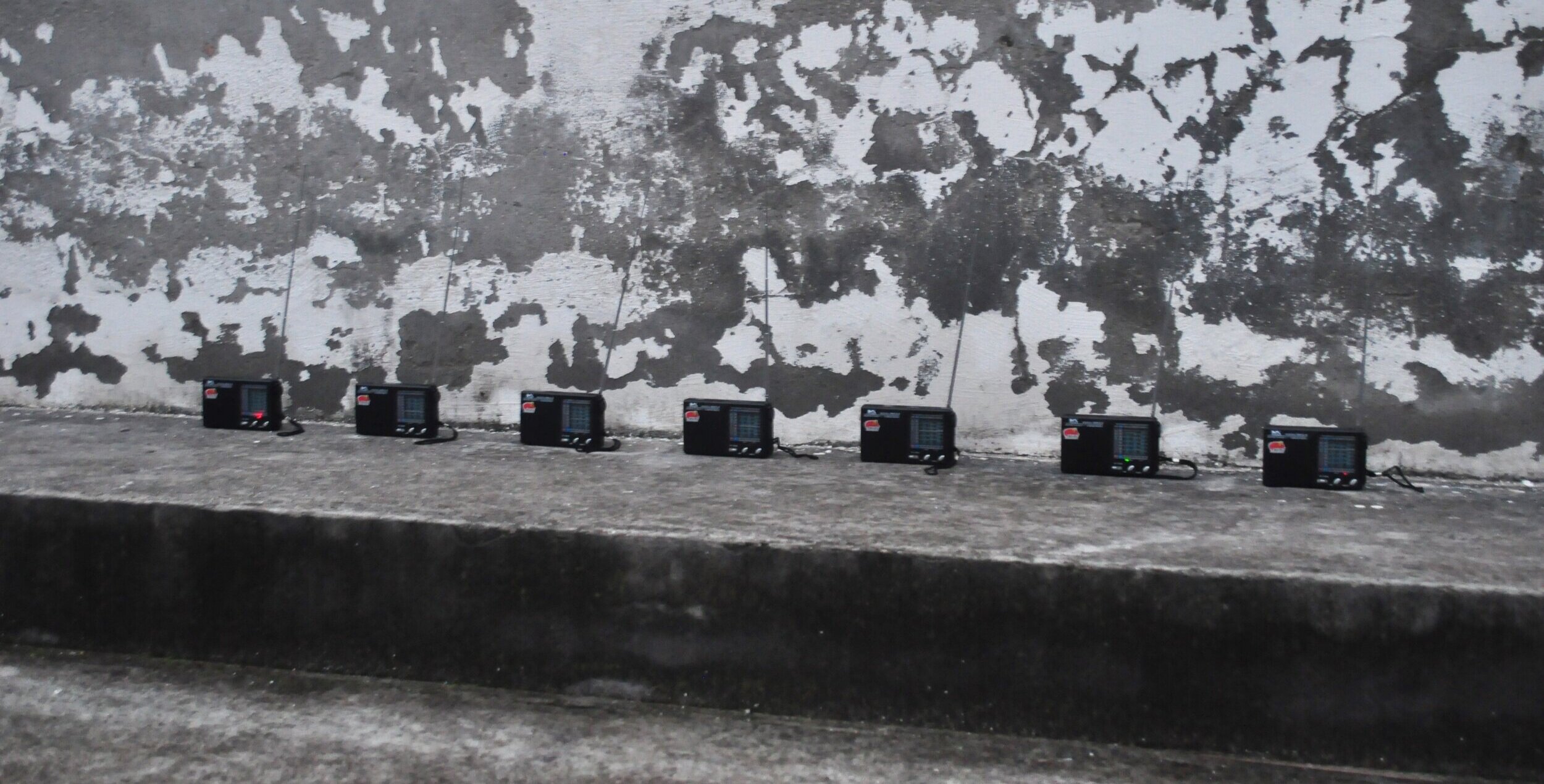
Concerto de Estática (Static Concert)
performance / sound intervention, 2014
Presented as part of Semana de Ocupação Urbana (Week of Urban Occupation), a program of performance in public space curated by the Laborativo Collective.
I installed seven portable radios at the central altar of the municipal cemetery of Criciúma, Brazil. I started the action by installing new batteries in the radios and tuning them to different frequencies, with no transmission. I turned their volumes up, generating a mass of static sounds, and distributed them around the altar, experimenting with different placements for maximum noise. I invited the local public to come closer and listen to the sound. I then lit a cigar and passed it around. The radios were left on the site, playing static for a few hours into the night until their batteries ran out. The first hour of static was documented in an audio recording.
installation at the Municipal Cemetery of Criciúma, Brazil, as part of Semana de Ocupação Urbana (Week of Urban Occupation), 2014
Most Brazilian cemeteries have a Catholic design that includes a central altar, decorated with an imposing cross. This altar is known as cruzeiro das almas, or souls' crossing. It is believed to be a liminal space that connects the material and spirit worlds, and a site where various rituals are performed.
Brazilian Catholics believe that the spirits of dead may linger in the cemetery for a while, and eventually find their way to the cruzeiro, where they make their trip to the next world. Relatives of the deceased offer candles and prayers there, to facilitate their loved ones’ passage. Cruzeiros are also used by practitioners of other religions, most notably of Umbanda, to communicate with the spirit world. Thus they also rely on the liminality of these sites, but with different goals. Their offerings of colored candles, beverages, perfume, ribbons and other small objects are meant for magical or initiation purposes. The contacted spirits are not necessarily ghosts, but may include deities and elementals.
Being such popular spots for more than one religion, cruzeiros at big Brazilian cemeteries are often covered in candle wax and offerings. Some cruzeiros are designed to account for this accumulation - this one in Criciúma has a concave altar top in order to collect the wax in the center and facilitate maintenance.
This project was inspired by research on electronic voice phenomena (EVP), a topic discussed in parapsychology and other pseudo-sciences, as well as in religions informed by 19th century spiritualism. In short, EVP is believed to be a paranormal phenomenon in which spirits communicate with the living, intentionally or not, through technology. It looks at static and background noise in audio recordings, searching for intelligible voices that may be attributed to spirits. In popular culture it has been featured in ghost-hunting shows and supernatural fantasy film.
EVP is akin to other pseudo-scientific practices popularized between 1840 and 1940, such as photographing ghosts. Compared to psychics and mediums, technology appeared to be a much more precise, objective and un-biased way to communicate with the dead. It would be a way to avoid the charlatans that plagued spiritualism and other religions. Naturally and ironically, it also allowed for whole new forms of charlatanism. EVP has been called different names such as “psicofonía” or “instrumental trans-communication”, and to this day is has many enthusiasts around the world.


